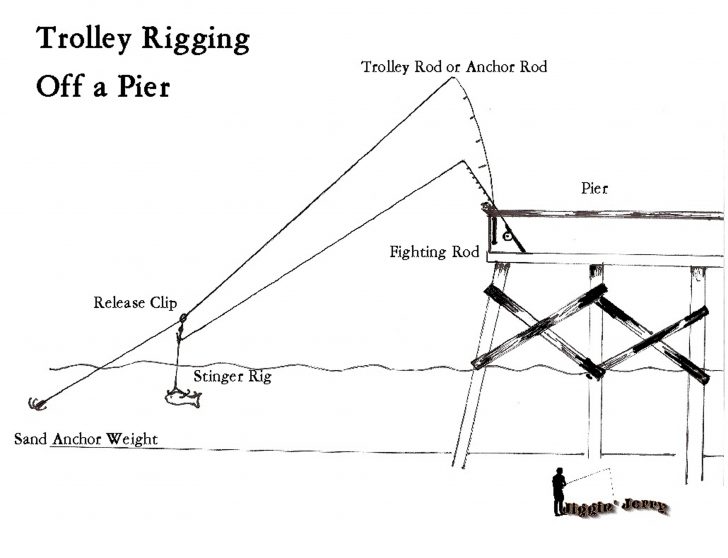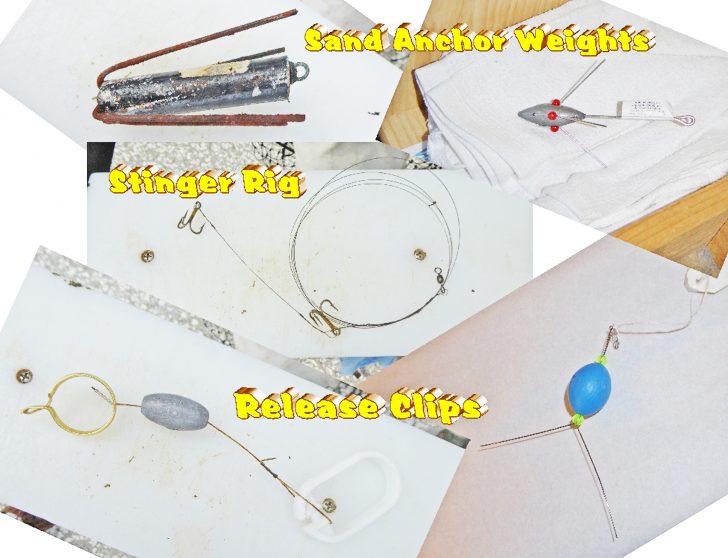As we move into June, we finally start moving out of spring and into the start of our summer season. As this happens, the water temperatures move into the ranges needed to bring in our King Mackerel.
Of course, they are not the only fish that become active as we move into the season. Spanish Mackerel, Tarpon and Bluefish, along with Ladyfish, which are also known as the poor man’s Tarpon, will be on the move.
The Folly fishing pier is our Lowcountry’s prime location for targeting King Mackerel
The Folly fishing pier is our Lowcountry’s prime location for targeting King Mackerel. The proper technique used is trolley rigging.
Trolley rigging consists of two fishing rods set in rod holders side by side on the railing of the pier, usually off the end to reach the deepest and furthest water from the surf.
One rod is called your fighting rod, this rod will not be a long rod, usually 7 feet or shorter, with a line rating from 20- to 50-pound test.
It will have a reel that has a line capacity to hold a minimum of 400-600 yards of 30-pound test monofilament.

This will ensure that you have enough yardage to handle the long and fast runs that King Mackerel are known for, the other rod is called the anchor rod.
These rods need to be as long and stout as possible and need to have reels that have a line capacity capable of holding at least 300 yards of 30- or 50-pound test line. Now, how it works.
Two rod holders will be needed—one for your anchor rod, and one for your fight rod. The anchor rod will be tied to a sand anchor weight.
This weight will usually have at least 4 to 5 wires off the sides of the weight, resembling a grappling hook.
The rod will be casted in the desired direction as far as possible and then the weight pulled in until it anchors firmly to the sea bottom.

Then the rod will be set into a rod holder, making sure that the rod is straight up and down.
This will allow you to obtain the most distance and height possible off of the pier for your live bait.
Next you will take your fight rod and tie your line to a stinger rig, a stinger rig will usually have at least 3 to 4 hooks incorporating at least 1 treble hook.
A lot of pre-purchased stinger rigs may have all treble hooks.
They will also be made of wire, now, you will take your stinger rig and bait the hooks with a live fish.
One of the most common fish used as bait for King Mackerel are small Bluefish, usually between 8 and 10 inches, but I have seen larger used successfully.
The stinger rigs are applied by hooking the center hook just below the dorsal fin. The next hook will be through the nose of the fish, and the third hook will be in the tail.

It is not uncommon to find a rig with a fourth hook with a longer lead, usually a treble. This is considered a trailer hook. This will not be hooked into the fish but will hang below the fish.
After baiting your rig, you will lower your anchor line from your anchor rod by removing the rod out of the rod holder and bringing the tip of the rod down to the railing.
This will allow you to apply the release clip to the anchor line, and the clip is then attached to the swivel of the stinger rig.
Make sure the fight rod is in its rod holder pointed on a 30-degree angle off of the pier next to the anchor rod.
After that, raise the anchor rod slowly and place it back into its rod holder with the rod straight up and down and the line taut.
As you do this, you will see your stinger rig with the bait attached hanging off of the release clip and your anchor line.
Do not be surprised if you find yourself battling a Spanish Mackerel, Tarpon, Ladyfish or some of the unwanted Sharks
You will then switch the reel on your fight rod to the casting position and slowly lower the fight line and stinger rig with the live bait down the anchor line until the bait enters the water.
Make sure you lower the fight line until you see the release clip at least 10 to 12 inches over the water. This will allow the bait to swim in a circle frantically in the water.
Then re-engage the fishing reel on your fight rod and set your drag for a run. Once the bait is spotted and hit by a game fish, the stinger rig will release from the release clip and your fight rod will sound.
The rest is all you—setting the hook, applying the proper drag during the fight and trying to control your excitement to win the battle against one of these powerhouses!
Just remember when targeting King Mackerel, do not be surprised if you find yourself battling a Spanish Mackerel, Tarpon, Ladyfish or some of the unwanted Sharks, that’s all in the fun of fishing.
Remember to bring yourself some Gotcha plugs or some Z-Man paddle tail grubs with jig heads to target some local Bluefish to use as bait.
Other fish that have been substituted are live Croaker, Whiting, large Pinfish and silver Perch. These may all be caught on small pieces of Shrimp, if the Bluefish cannot be found.
Like I always say, good luck out there and have fun fishing! To view some fishing adventures, go to my YouTube Channel “Fishing with Jiggin Jerry” or www.jigginjerry.net.
You may also enjoy reading What Bait Do I Need?





